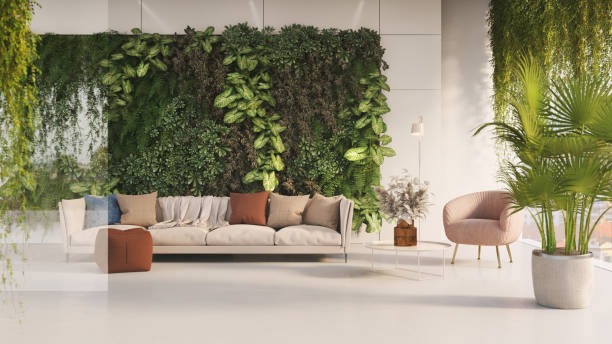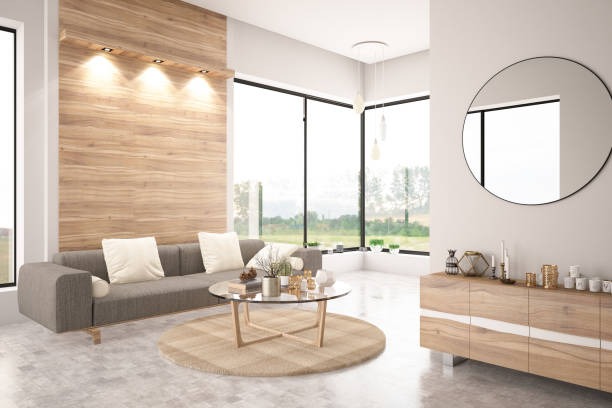Interior design is more than just choosing colors and furniture—it’s about crafting spaces that align with the client’s vision and lifestyle. Effective client communication and project management are the cornerstones of a successful interior design project. In this blog, we’ll explore the crucial interplay between these two elements and share valuable insights to help designers navigate this intricate dance.

The First Encounter: Building Client Relationships
1. Active Listening: The Art of Truly Understanding
The first step in client communication is active listening. Pay attention to your clients’ desires, needs, and concerns. By understanding their unique preferences, you can tailor your designs to create spaces that resonate with them on a personal level.
2. Effective Questioning: Digging Deeper for Insights
Ask open-ended questions to uncover more about your clients’ tastes, lifestyle, and expectations. This not only helps you gain a clearer picture but also shows your genuine interest in their project.
3. Transparency and Honesty: Setting Realistic Expectations
Be transparent about what is achievable within their budget and timeline. Honesty builds trust, and clients will appreciate your candor.
Crafting the Vision: Concept Development
4. Visual Aids: Using Mood Boards and Visual References
Presenting mood boards and visual references can help convey design concepts effectively. This visual communication aids clients in understanding your vision and allows them to provide valuable feedback.
5. Project Scope and Timeline: Setting Clear Parameters
Clearly define the scope of work and project timeline. A well-structured project plan with milestones keeps both you and the client on the same page.
Collaboration and Communication
6. Regular Updates: Keeping Clients in the Loop
Frequent communication is key. Provide regular updates on project progress, budget, and any potential deviations. Clients should feel informed at every stage.
7. Flexibility and Adaptability: Handling Changes Gracefully
In interior design, changes are inevitable. Be prepared to adapt to client requests while keeping the project on track. Communication is crucial when managing changes.
The Power of Documentation
8. Detailed Contracts: Protecting Both Parties
A well-drafted contract outlines project scope, fees, and responsibilities. It serves as a reference point and legal protection for both you and your client.
9. Change Orders: Documenting Modifications
When changes occur, create change orders that detail the adjustments, costs, and impacts on the project timeline. Signed change orders provide clarity and prevent disputes.
Project Closure and Beyond
10. Final Walkthrough: Ensuring Client Satisfaction
Conduct a final walkthrough with your client to address any concerns or questions. Ensure they are satisfied with the end result.
11. Post-Project Relationship: Building Long-Term Connections
Maintain a positive relationship with clients even after the project is complete. This can lead to referrals and future collaborations.
Conclusion: The Art of Harmonious Collaboration
In the world of interior design, successful projects are not just about aesthetics but also about effective client communication and project management. By building strong relationships, maintaining clear communication, and embracing flexibility, interior designers can ensure that their clients’ dreams are transformed into stunning living spaces. Remember, a well-managed project not only satisfies clients but also elevates your reputation as a skilled and reliable designer in the industry.




FREQUENTLY ASKED QUESTIONS (FAQS)
Why is effective client communication important in interior design projects?
Effective client communication is crucial in interior design because it helps establish clear expectations, ensures the designer understands the client’s vision, and fosters trust throughout the project. It also minimizes misunderstandings and enhances the overall client experience.
How do I initiate communication with a potential interior design client?
Begin by scheduling an initial consultation to discuss their project requirements, budget, and preferences. This can be done in person or virtually. Active listening and asking open-ended questions are key to understanding their needs.
What information should be included in a design proposal for a client?
A design proposal should include project scope, timeline, budget estimate, payment terms, and the designer’s credentials. It should also outline the design process, including client involvement and decision-making stages.
What is the best way to present design concepts to clients?
Present design concepts using a combination of mood boards, 3D renderings, sketches, and samples of materials and finishes. This visual presentation helps clients better understand the design vision.
